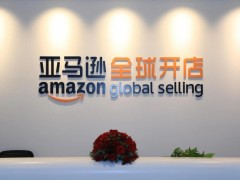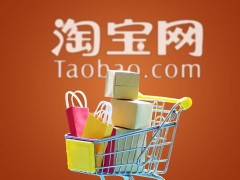How to operate your own factory live streaming business?
自家工厂带货运营涉及产品生产、品牌建设、销售渠道开发、物流配送和售后服务等多个环节。
以下是一些建议,帮助你更好地运营自家工厂的带货业务:
1. 产品研发与优化:
(1) 根据市场需求研发新产品。
(2) 不断改进产品质量与设计。
(3) 定期收集用户反馈并针对性地调整产品。
2. 品牌塑造:
(1) 确立品牌定位和目标受众。
(2) 建立统一的品牌形象,包括LOGO、口号、包装设计等。
(3) 通过故事营销、品牌传播等方式增强品牌影响力。
3. 销售平台选择:
(1) 在线上,可以选择开设自营电商平台或入驻第三方平台如淘宝、京东、拼多多等。
(2) 线下可以通过自建门店、合作经销商或者加盟连锁等方式销售。
4. 营销推广:
(1) 利用社交媒体、搜索引擎广告、直播带货等网络营销手段推广产品。
(2) 举办促销活动、打折优惠等活动吸引客户购买。
(3) 与其他品牌或KOL(关键意见领袖)合作,提高曝光率。
5. 物流配合:
(1) 选择可靠的物流公司确保货物准时送达。
(2) 提供便捷的物流跟踪服务,增加消费者信任度。
(3) 考虑开设多个仓库以减少物流成本和提高效率。
6. 客户服务:
(1) 提供专业的客户服务团队,处理咨询和售后问题。
(2) 制定明确的退换货政策,提升顾客满意度。
(3) 采纳顾客反馈,不断优化购物体验。
7. 管理与监控:
(1) 使用ERP(企业资源计划)系统管理库存、订单、财务等。
(2) 分析销售数据调整市场策略。
(3) 对生产过程进行质量控制以确保产品符合标准。
8. 持续创新:
(1) 关注行业动态和技术发展,不断创新产品功能和营销方式。
(2) 培养企业文化,鼓励员工提出创意和改进建议。
以上步骤需要结合实际情况进行调整,每个环节都至关重要,缺一不可。成功的运营还需要团队合作、持之以恒的努力以及不断的学习和适应市场变化。
Professional answer
Operating your own factory live streaming business involves multiple links such as product production, brand building, sales channel development, logistics distribution and after-sales service.
Here are some suggestions to help you better operate your own factory live streaming business:
1. Product research and development and optimization:
(1) Develop new products based on market demand.
(2) Continuously improve product quality and design.
(3) Regularly collect user feedback and adjust products accordingly.
2. Brand building:
(1) Establish brand positioning and target audience.
(2) Establish a unified brand image, including LOGO, slogan, packaging design, etc.
(3) Enhance brand influence through story marketing, brand communication and other methods.
3. Sales platform selection:
(1) Online, you can choose to open your own e-commerce platform or join a third-party platform such as Taobao, JD.com, Pinduoduo, etc.
(2) Offline, you can sell through self-built stores, cooperative dealers, or franchise chains.
4. Marketing promotion:
(1) Use social media, search engine advertising, live streaming and other online marketing methods to promote products.
(2) Organize promotional activities, discounts and other activities to attract customers to buy.
(3) Cooperate with other brands or KOLs (key opinion leaders) to increase exposure.
5. Logistics cooperation:
(1) Choose a reliable logistics company to ensure that the goods are delivered on time.
(2) Provide convenient logistics tracking services to increase consumer trust.
(3) Consider opening multiple warehouses to reduce logistics costs and improve efficiency.
6. Customer Service:
(1) Provide a professional customer service team to handle consultations and after-sales issues.
(2) Formulate a clear return and exchange policy to improve customer satisfaction.
(3) Adopt customer feedback and continuously optimize the shopping experience.
7. Management and Monitoring:
(1) Use ERP (Enterprise Resource Planning) system to manage inventory, orders, finance, etc.
(2) Analyze sales data to adjust market strategies.
(3) Perform quality control on the production process to ensure that products meet standards.
8. Continuous Innovation:
(1) Pay attention to industry trends and technological developments, and continuously innovate product functions and marketing methods.
(2) Cultivate corporate culture and encourage employees to put forward creative ideas and suggestions for improvement.
The above steps need to be adjusted according to actual conditions. Each link is crucial and indispensable. Successful operations also require teamwork, persistent efforts, and continuous learning and adaptation to market changes.
Similar Q&A
recommend What is the difference between JD Rising Star Program and New Star Program?
E-c News Continuously pushing e-commerce knowledge to you








Latest Q&A More
-
Do I need a trademark to open a franchise store on Pinduoduo to sell books?
#Pinduoduo#
-
How to withdraw from a Pinduoduo store
#Pinduoduo#
-
How to withdraw from Pinduoduo merchants
#Pinduoduo#
-
How to pay fees when closing a Pinduoduo store
#Pinduoduo#
-
How to withdraw from Pinduoduo
#Pinduoduo#
-
Which store on Pinduoduo is authentic?
#Pinduoduo#
-
Which stores on Pinduoduo can buy genuine products?
#Pinduoduo#
-
How to check the store under Pinduoduo
#Pinduoduo#
-
How to receive Pinduoduo online game products
#Pinduoduo#
-
How to sell the electronic version on Pinduoduo
#Pinduoduo#
E-c News 2025-12-09 10:10:35

- African netizens use China Africa cross-border e-commerce platform for online shopping
- how is the new seller of cross-border e-commerce doing?
- how can cross-border e-commerce Amazon sell on Amazon platform without goods?
- Amazon store opening process and cost analysis!
- Amazon plans to expand its pharmacy business on a large scale and will add same day delivery service
